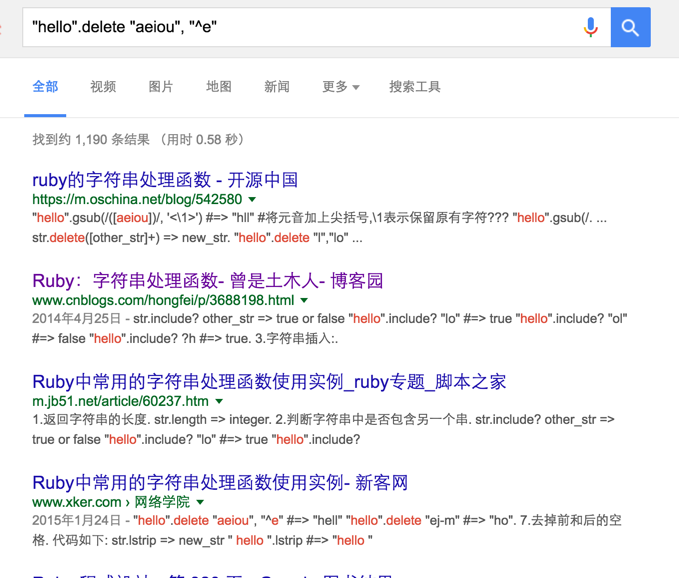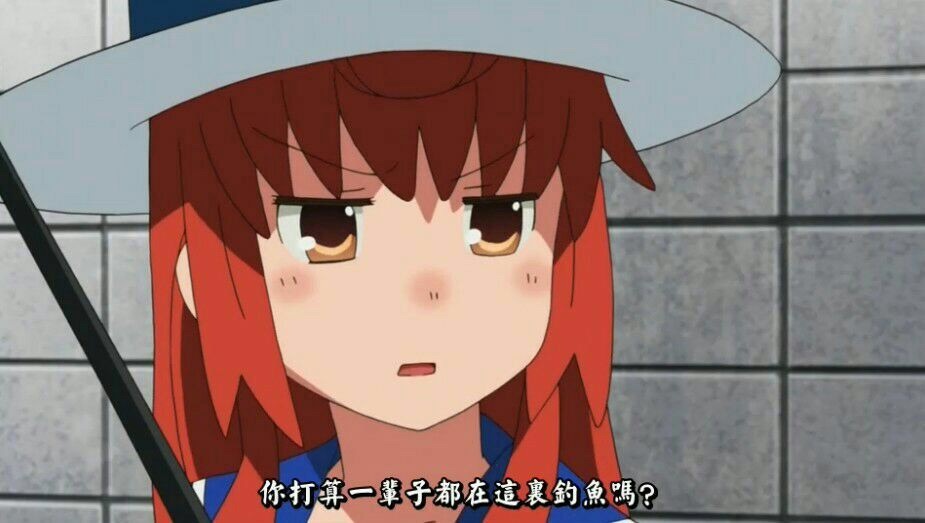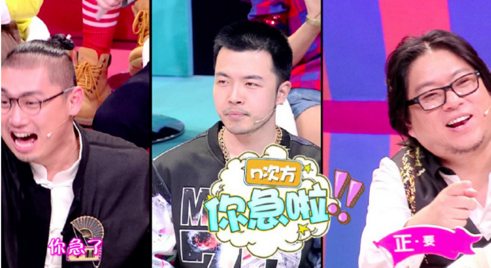新手问题 请教一下 String 的 delete 方法是怎么用啊?英文不好看不懂
"hello".delete "l","lo" #=> "heo" "hello".delete "lo" #=> "he" "hello".delete "aeiou", "^e" #=> "hell" "hello".delete "ej-m" #=> "ho"
Returns a copy of str with all characters in the intersection of its arguments deleted.
可以解释一下吗,谢谢,已谷歌。
- 怎么用 自己进入 irb 调试一下,对比下输入输出不就知道了吗?
2.英文不好,那么多翻译工具、网页也可以用,有什么看不懂的?
3.已谷歌,不知道你谷歌的啥,例如你不知道 puts 怎么用,这估计 google 也帮不了你了吧。。。
#1 楼 @catherine 不想答就不答嘛,我国社区总是针对人不针对问题。我搜了 stackoverflow,第三行和第四行没看懂。谷歌翻译我也用了,你自己看看出来的结果能看懂吗。你会的话,贴个链接或者简单几句说完不就行了,非得装老先生吐槽新手,有意思么。
不客气,我也不算老手,今年才毕业。
最开始学习,看到正则表达式我也不知道这是什么鬼,奇奇怪怪的符号放在一起。所以先尽量把文档的说明看懂,这一步很容易。再自己调试,尝试找规律来得出答案,这个过程后,就算有问题,你也差不多提取到这个问题困扰你的核心部分。不管是提问还是搜索,都更容易获得更准确的反馈。
#4 楼 @ajfg93 你这种心态,丝毫对不起给你回复的人。
- 第一句话就把给你回复解决问题方法而非问题答案的人说成这个样子?还要拉上一个国内论坛?对人不对事?你如果觉得这种人多,那我只能告诉你,你这种问个问题就想让别人恭恭敬敬把答案送上来的人更多。
- 你说你查了,google 了,查过,google 过,没找出来就完了?浅尝辄止之后就可以这种口气来说别人?况且,难道 google 解决不了你的问题?我只能说,googole 可以解决你这辈子遇到的所有问题,只是看你是不是能找出来,正则表达式的符号你不清楚,证明你在这方面的知识地图很稀疏,你自然会在现在和以后遇到更多你不明白的问题,你这样的心态,如果让回答你问题的让心怀一点点安慰?
- 与其说他装老先生吐槽新手,不如说你这个新手装怨妇来吐槽他吧,英语不好,知识掌握的少都没什么大不了,重要的是,你这种状态加上你这种心态,很难想象你如何才可以进步。 我纯粹国内一般吐槽者,听不见去可以直接忽略,只是觉得或许这样说几句,对回答你问题的人有了一点点尊重。
要学会看全啊,还有一句,Uses the same rules for building the set of characters as String#count. http://ruby-doc.org/core-2.3.0/String.html#method-i-count
Each other_str parameter defines a set of characters to count. The intersection of these sets defines the characters to count in str. Any other_str that starts with a caret ^ is negated. The sequence c1-c2 means all characters between c1 and c2. The backslash character \ can be used to escape ^ or - and is otherwise ignored unless it appears at the end of a sequence or the end of a other_str.


